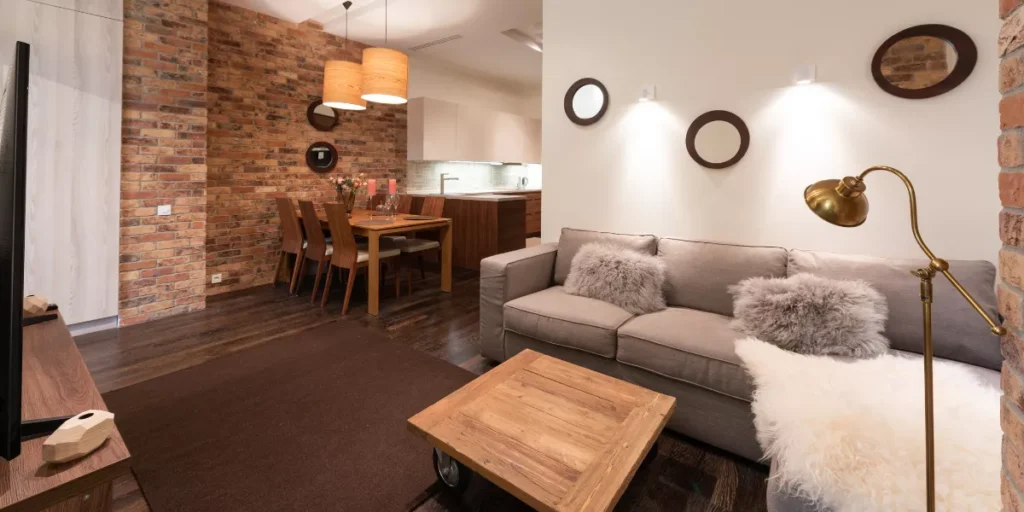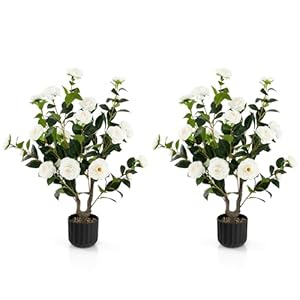
When creating a balanced furniture layout, it’s crucial to pay attention to symmetry, asymmetry, furniture scale, functional traffic flow, and visual weight. Symmetry can bring a sense of order and formality to a space, while asymmetry injects a dynamic and eclectic vibe. Ensuring the right furniture scale that fits the room’s size and proportions is key to maintaining a harmonious feel. Functional traffic flow allows for easy movement, and incorporating visual weight through various elements helps achieve equilibrium. But what about the subtle details that truly make a layout stand out?
Importance of Symmetry and Asymmetry
When designing a furniture layout, understanding the importance of symmetry and asymmetry is key to achieving a balanced and visually appealing space. Symmetry involves creating a mirror image on either side of a central point, providing a sense of order and formality. This can be seen in matching furniture pieces or identical decor items placed on either side of a room.
On the other hand, asymmetry introduces a more dynamic and eclectic feel by using different objects of equal visual weight to create equilibrium. Mixing various shapes, sizes, and textures can add interest and prevent a space from feeling too rigid.
Symmetry is often associated with a more traditional and formal design aesthetic, while asymmetry is embraced in modern and contemporary styles. However, a successful furniture layout often combines elements of both to create a harmonious environment. By carefully balancing symmetry and asymmetry in your design, you can achieve a space that isn’t only visually pleasing but also functional and inviting.
Choosing the Right Furniture Scale
To ensure a well-balanced furniture layout, consider selecting the right furniture scale that complements the size and proportions of your space. Choosing the appropriate furniture scale is crucial in creating a harmonious and visually appealing arrangement. Start by measuring your room to determine the dimensions you’re working with. Large furniture pieces in a small room can make the space feel cramped, while small furniture in a large room can look insignificant. Aim for a mix of furniture sizes that fit well within the room without overwhelming or underwhelming the space.
When selecting furniture, pay attention to the scale of each piece in relation to the room as a whole. Consider the height, width, and depth of the furniture items to ensure they’re proportionate to the room size. Additionally, think about the negative space around the furniture – too much or too little can throw off the balance of the layout. By choosing furniture with the right scale, you can enhance the overall aesthetic and functionality of your space.
Utilizing Functional Traffic Flow
Consider optimizing the flow of movement in your space by strategically arranging furniture to create a functional traffic pattern. To ensure a smooth and efficient traffic flow, place furniture in a way that allows for easy navigation without obstacles. Start by positioning larger pieces such as sofas and chairs against walls or in corners to open up the central area for movement. Arrange furniture in a way that directs traffic around the room rather than through the seating area to prevent congestion.
Create clear pathways between furniture pieces to facilitate movement from one area to another. Avoid placing furniture in a manner that blocks natural pathways or interrupts the flow of traffic. Additionally, leave enough space between pieces to allow for comfortable passage without having to squeeze through tight gaps.
Incorporating Visual Weight and Balance
To achieve a balanced furniture layout, pay attention to how visual weight and balance can impact the overall look and feel of your space. Visual weight refers to the perceived heaviness of an object based on its size, color, texture, and placement in a room. Larger or darker items tend to carry more visual weight than smaller or lighter ones. When arranging furniture, consider distributing visual weight evenly to create a sense of equilibrium.
Balance in a room can be achieved through symmetrical or asymmetrical arrangements. Symmetrical balance involves mirroring elements on either side of a central axis, creating a more formal and traditional look. On the other hand, asymmetrical balance involves placing different objects of equal visual weight off-center but still achieving equilibrium through careful planning.
Home décor














